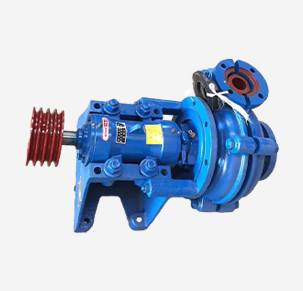Russian
- Afrikaans
- Albanian
- Amharic
- Arabic
- Armenian
- Azerbaijani
- Basque
- Belarusian
- Bengali
- Bosnian
- Bulgarian
- Catalan
- Cebuano
- Corsican
- Croatian
- Czech
- Danish
- Dutch
- English
- Esperanto
- Estonian
- Finnish
- French
- Frisian
- Galician
- Georgian
- German
- Greek
- Gujarati
- Haitian Creole
- hausa
- hawaiian
- Hebrew
- Hindi
- Miao
- Hungarian
- Icelandic
- igbo
- Indonesian
- irish
- Italian
- Japanese
- Javanese
- Kannada
- kazakh
- Khmer
- Rwandese
- Korean
- Kurdish
- Kyrgyz
- Lao
- Latin
- Latvian
- Lithuanian
- Luxembourgish
- Macedonian
- Malgashi
- Malay
- Malayalam
- Maltese
- Maori
- Marathi
- Mongolian
- Myanmar
- Nepali
- Norwegian
- Norwegian
- Occitan
- Pashto
- Persian
- Polish
- Portuguese
- Punjabi
- Romanian
- Russian
- Samoan
- Scottish Gaelic
- Serbian
- Sesotho
- Shona
- Sindhi
- Sinhala
- Slovak
- Slovenian
- Somali
- Spanish
- Sundanese
- Swahili
- Swedish
- Tagalog
- Tajik
- Tamil
- Tatar
- Telugu
- Thai
- Turkish
- Turkmen
- Ukrainian
- Urdu
- Uighur
- Uzbek
- Vietnamese
- Welsh
- Bantu
- Yiddish
- Yoruba
- Zulu
Telephone: +86 13120555503
Email: frank@cypump.com
Янв . 02, 2025 15:49 Back to list
mixed flow pumps
Understanding Mixed Flow Pumps Efficiency and Applications
Mixed flow pumps are an essential component in various industrial applications, combining characteristics of both centrifugal and axial flow pumps. They are designed to handle a wide range of liquids, making them versatile and effective for numerous purposes. This article explores the operational principles, efficiency, advantages, and applications of mixed flow pumps.
Operational Principles
Mixed flow pumps work by drawing fluid into the pump through an inlet, where the fluid is progressively accelerated by the impeller. The impeller in a mixed flow pump has angled blades that combine both radial and axial movements. As the impeller rotates, it imparts kinetic energy to the fluid, pushing it out of the pump while simultaneously lifting it vertically. This unique combination allows the mixed flow pump to transport fluids more efficiently than typical centrifugal pumps in applications where moderate head and high flow rates are required.
Design and Components
A mixed flow pump typically consists of several key components the pump casing, impeller, discharge pipe, and motor. The pump casing is designed to guide the flow of the fluid and minimize turbulence, contributing to efficient operation. The impeller itself is a critical component, as its design and materials can significantly affect performance. High-quality materials are chosen based on the fluid to be pumped, ensuring durability and resistance to wear over time.
The motor, usually electric, provides the necessary power to drive the impeller. The configuration of the motor—whether it’s directly coupled or connected through a gearbox—can also influence the overall efficiency of the pump.
Efficiency and Benefits
One of the significant advantages of mixed flow pumps is their efficiency in handling large volumes of fluid at moderate pressures. They are particularly beneficial in applications where a high flow rate is necessary, such as in irrigation, drainage, and municipal water supply systems. The mixed flow design allows for efficient energy transfer from the motor to the fluid, minimizing energy losses and operational costs.
Another noteworthy benefit is their ability to handle liquids with varying properties, including viscous fluids or those containing solids. They are less prone to clogging compared to pure axial or centrifugal pumps, making them ideal for applications in wastewater treatment and mining.
mixed flow pumps

Applications
Mixed flow pumps find a wide range of applications across different industries. Some common uses include
1. Irrigation Systems They play a crucial role in agricultural settings, where efficient water distribution is necessary for crop growth. Mixed flow pumps can deliver large quantities of water from rivers, lakes, or underground sources to farms.
2. Wastewater Treatment In wastewater plants, these pumps help in transporting sewage and effluents. Their ability to manage solids and varying fluid characteristics makes them an ideal choice for this application.
3. Fire Fighting Systems Mixed flow pumps are employed in fire protection systems, providing the necessary water flow to suppress fires effectively.
4. Marine Applications In the shipping industry, mixed flow pumps are used for ballast and bilge water pumping, ensuring the stability and safety of vessels during operations.
5. Fish Farming In aquaculture, maintaining water circulation and aeration is vital for fish health, and mixed flow pumps serve this purpose efficiently.
Conclusion
In summary, mixed flow pumps are a crucial technology for fluid management in various sectors. Their design combines the advantages of both centrifugal and axial flow pumps, allowing for efficient performance across a broad spectrum of applications. With the capacity to handle large volumes of fluid with varying properties, they stand out in fields such as agriculture, wastewater treatment, and industrial processes. As technology continues to advance, the evolution of mixed flow pumps will likely lead to even greater efficiencies and capabilities, further solidifying their importance in modern fluid management systems. Understanding their operation and applications can help industries select the right pump for their needs, optimizing performance and ensuring reliable service in their processes.
-
Horizontal Split Case Pump with GPT-4 Turbo | High Efficiency
NewsAug.01,2025
-
ISG Series Pipeline Pump - Chi Yuan Pumps | High Efficiency, Durable Design
NewsAug.01,2025
-
Advanced Flue Gas Desulfurization Pump with GPT-4 Turbo | Durable & Efficient
NewsJul.31,2025
-
ISG Series Vertical Pipeline Pump - Chi Yuan Pumps | Advanced Hydraulic Design&Durable Construction
NewsJul.31,2025
-
ISG Series Vertical Pipeline Pump - Chi Yuan Pumps | Energy Efficient & Low Noise
NewsJul.31,2025
-
pipeline pump - Chi Yuan Pumps Co., LTD.|High Efficiency&Low Noise
NewsJul.31,2025










